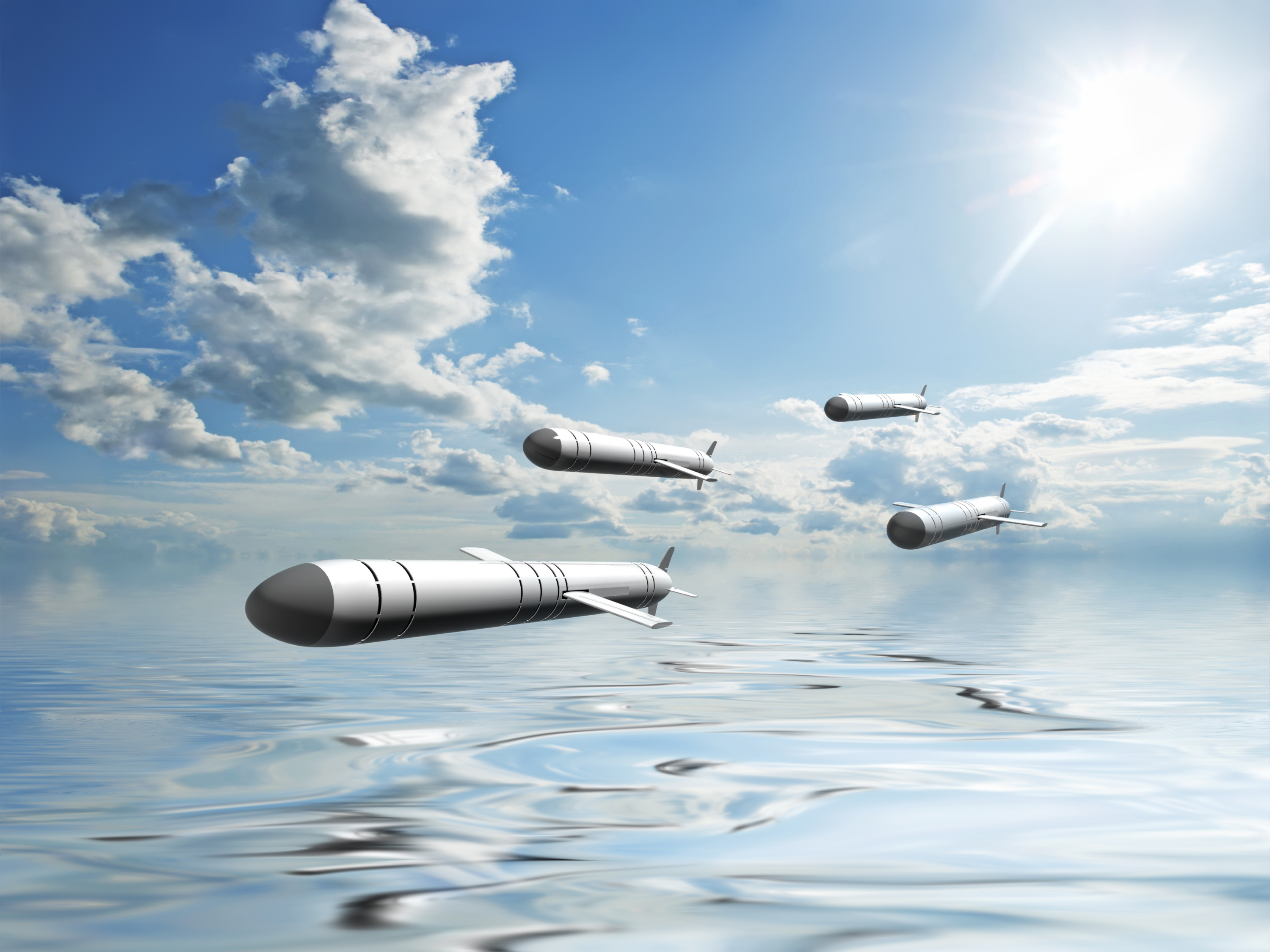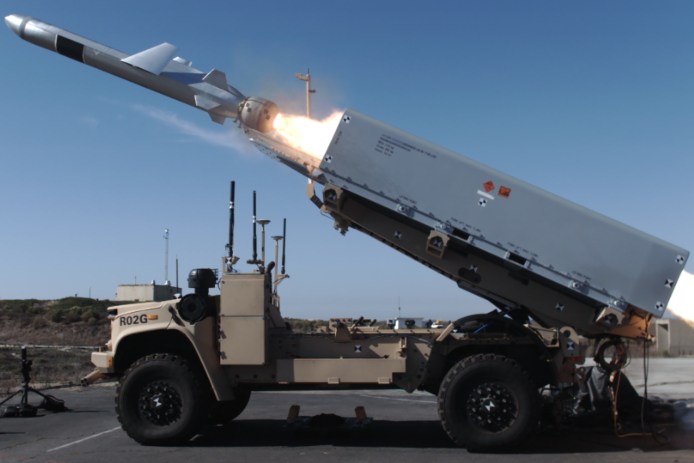Table Of Content
- Space Force awards contracts for Victus Haze rapid launch mission
- Tomahawk missile variants
- Everything To Know About Tomahawk Missiles: Speed, Cost, And Destructive Power
- Defense Department Successfully Transitions New Technology to Programs of Record
- In data: Latvia's defence budget set for 70% growth by 2028
- Japanese Soldiers Complete US-Led Tomahawk Land Attack Missile Training
- Strategic Boost: RMMV to Deliver 300 Military Trucks to Austria in 300-Million-Euro Deal
- Raytheon wins $2B contract for new nuclear cruise missile

These missiles are about the same size and weight and fly at similar speeds to the above category. In August 2017, the Air Force awarded Raytheon and Lockheed Martin Corp. each a $900 million contract to proceed with development of the LRSO system. (See ACT, October 2017.) The contracts were intended to cover a 54-month period of development after which the Air Force would choose one of the contractors to complete development and begin production. Following the Milestone B decision, the Air Force in July awarded a $2 billion development contract to the Raytheon Co. for the program.
Space Force awards contracts for Victus Haze rapid launch mission
Often variants of the same missile are produced for different launch platforms (for instance, air- and submarine-launched versions). Raytheon planned to undertake recertification and modernisation programmes for Tomahawk Block IV missile in 2019 to add maritime strike capability and multiple-effects warhead upgrades to the missiles. The Tomahawk is designed to operate at very low altitudes while maintaining high-subsonic speeds.
Tomahawk missile variants
The Boeing B-52 Stratofortress is the exclusive delivery vehicle for the AGM-86 and AGM-129 ACM. Both missile types are configurable for either conventional or nuclear warheads. US Navy launch platforms were modified to accommodate upgraded Tomahawk missile variants.
Everything To Know About Tomahawk Missiles: Speed, Cost, And Destructive Power
The Tomahawk missile itself is a 20.3 foot long craft with a wingspan of eight and a half feet, and it weighs 3,330 pounds with all of its components. It's powered by both a rocket booster and turbofan jet engine made by Williams International. According to PBS, the rocket booster engine launches the Tomahawk in the air (hence all the smoke you may see in news broadcasts or photos you see of the missile) and then its jet engine takes the missile the rest of the way to its target. Tomahawk missiles have been world famous since the first Gulf War in 1991 when the United States used the missile against Saddam Hussein's forces in Iraq and Kuwait. Since then, the missile system has been used in nearly every conflict the United States has been involved in, including recent strikes against Houthi rebels in Yemen.
The United States Army has also tested launching Tomahawks from ground-based platforms. The USS Missouri, a World War II-era battleship and the very last of its kind, was fitted to fire Tomahawks during the opening salvos of the First Gulf War. The United States Air Force (USAF) deploys an air-launched cruise missile, the AGM-86 ALCM.
In data: Latvia's defence budget set for 70% growth by 2028
41 VLS would have to be assured and while NAVAIR added that, “A surface-launch variant is outside the scope of MACE at this time,” it notably did not rule out the idea. Arleigh Burke-class guided missile destroyer USS Fitzgerald (DDG 62) conducts a live fire of a ... Aviation Ordnanceman 1st Class Douglas Scott, assigned to “The Fighting Tigers” of Patrol Squadron ...
Japanese Soldiers Complete US-Led Tomahawk Land Attack Missile Training
At the time, the service planned to downselect to a single vendor in FY22 during the EMD period. During the program’s EMD stage, Raytheon will continue maturing its LRSO design and prepare for full-rate production of the weapon in 2027, the contract announcement stated. Last month, the Golden Horde program marked a signature event, as an F-16 released two Collaborative Small Diameter Bombs (CSDBs) in what the Air Force called the first-ever flight demonstration of collaborative weapons (Defense Daily, Jan. 7).
The alternative mistake, having too few expensive interceptors for a more challenging threat, could invite catastrophe. Commanders likely err toward greater capability relative to expected missions in selecting defensive interceptor loadouts, increasing the cost of interceptors on board. The SLCM-N is a cruise missile launched from surface ships or attack submarines (SSNs)—not from ballistic missile submarines. The United States deployed these missiles on SSNs during the Cold War, but they were removed from service (along with most US tactical nuclear weapons) and eventually retired by 2010. Cruise missiles can play an important role in military operations, but their cost can be significant. The cost of cruise missiles can vary based on a variety of factors, such as the type of missile, its size, range, and the materials used in its construction.
Raytheon wins $2B contract for new nuclear cruise missile
The RFI indicates that the missiles will need to be compatible with external carriage on the F/A-18E/F Super Hornet as the “threshold platform”. They’ll need to fit with internal and external carriage options for the F-35A/C as well. The Design Sprint featured experts from various institutions, including Sandia National Lab, Massachusetts Institute of Technology Lincoln Labs, Georgia Tech Research Institute, and Johns Hopkins University Applied Physics Laboratory.
The Tomahawk Block IV uses GPS navigation and a satellite data-link to continue through a pre-set course. It can be armed with a nuclear or unitary warhead or a conventional submunitions dispenser with combined-effect bomblets. The Tomahawk Block IV missiles were converted and upgraded to Block V in 2017.
Likewise, the US Navy should evaluate whether the current fifth-generation Tomahawk sea-launched cruise missile could be suitable for this role. After all, a previous version was employed with a nuclear warhead during the Cold War. The W80-4 warhead, now under development by NNSA for the LRSO, could be adapted for use in the SLCM-N.

Outside of the Gulf War, Tomahawks were used to attack Iraq several more times in the 1990s, against Bosnian targets in 1995, during NATO actions against Yugoslavia, and during the engagements against Afghanistan after 9/11. More recently, Tomahawks saw use in Libya as part of Operation Odyssey Dawn, ISIS in Syria experienced the effects of Tomahawks, and Syrian chemical weapons facilities used by despot Bashar Al-Assad were struck by Tomahawks in 2017. In 2024, both American and British forces launched Tomahawks against Houthi rebels after the rebel group attacked shipping lanes and US-flagged vessels in the Red Sea. Lockheed Martin was even reported to be working to integrate the LRASM on Boeing’s P-8A Poseidon maritime patrol aircraft. There is ample precedent for fitting a long range anti-ship missile to such an aircraft. The air-launched version of the Harpoon was first deployed on the Navy's P-3C Orion in 1979.
The U.S. Navy has asked industry about the possibility of making a long-range air launched cruise missile up to 10 times cheaper than current missiles. The ABLs were also installed on eight Spruance-class destroyers, the four Virginia-class cruisers, and the nuclear cruiser USS Long Beach. These canisters are also in vertical launching systems (VLS) in other surface ships, capsule launch systems (CLS) in the later Los Angeles-class submarine and Virginia-class submarines, and in submarines' torpedo tubes.All ABL equipped ships have been decommissioned. Raytheon was awarded a $346m production contract for 473 Tomahawk Block IV cruise missiles in March 2006. The contract includes 65 submarine torpedo tube-launched missiles for the Royal Navy. In addition to defending commercial shipping, air and missile defenses protect the value of the U.S. ships deployed to the region.
How Iran’s attack on Israel was stopped - The Guardian
How Iran’s attack on Israel was stopped.
Posted: Mon, 15 Apr 2024 07:00:00 GMT [source]
In 1995, the US agreed to sell 65 Tomahawks to the UK for torpedo-launch from their nuclear attack submarines. The UK subsequently bought 20 more Block III to replenish stocks.[82] The Royal Navy has since fired Tomahawks during the 2000s Afghanistan War, in Operation Telic as the British contribution to the 2003 Iraq War, and during Operation Ellamy in Libya in 2011. The Tomahawk (/ˈtɒməhɔːk/) Land Attack Missile (TLAM) is a long-range, all-weather, jet-powered, subsonic cruise missile that is primarily used by the United States Navy and Royal Navy in ship and submarine-based land-attack operations.
The cost of launching a cruise missile can vary significantly depending on the type of missile, the distance it must travel, and the number of missiles being launched. For example, the US Navy estimates that it costs around $1 million to launch a single Tomahawk Block IV ALCM, while the cost of launching a single AGM-158 JASSM-ER LACM is estimated to be around $2.5 million. The cost of launching a single Kh-101 air-launched cruise missile is estimated to be around $4 million. The Department of Defense announced today that the multi-year Low-Cost Cruise Missile (LCCM) Joint Capability Technology Demonstration (JCTD) project successfully transitioned three primary technologies to programs of record or development projects. The LCCM JCTD was initiated to advance a decentralized autonomy module for low-cost, conventional, collaborative cruise missiles; the integrated management team developed a new air vehicle and launcher, an autonomy software module, and a jam-resistant datalink. That number consists of Ohio-class submarines, Arleigh Burke-class destroyers, and more.
Given the weapon's ubiquity, it's worth exploring what exactly a Tomahawk missile is. The United States Navy reports that over 2,300 Tomahawks have been deployed in combat, with that number increasing by the day. A land variant of MACE might fulfill the same requirement and in an attritional fight like that in Ukraine, its low cost would be highly desired. If MACE is successful, there’s a good chance that it could be used as a shipborne missile fired from the Mark 41 Vertical Launching Systems (VLS) that equips the Navy’s cruisers and destroyers.
